We spent Monday morning on a tour up into the hills above Nadi and Lautoka, to see a small village called Abaca. In Fijian, ‘b’ is pronounced ‘mb’, ‘d’ is pronounced ‘nd’, and ‘c’ is pronounced ‘th’. Thus we left Nandi to visit Ambatha. Read on!
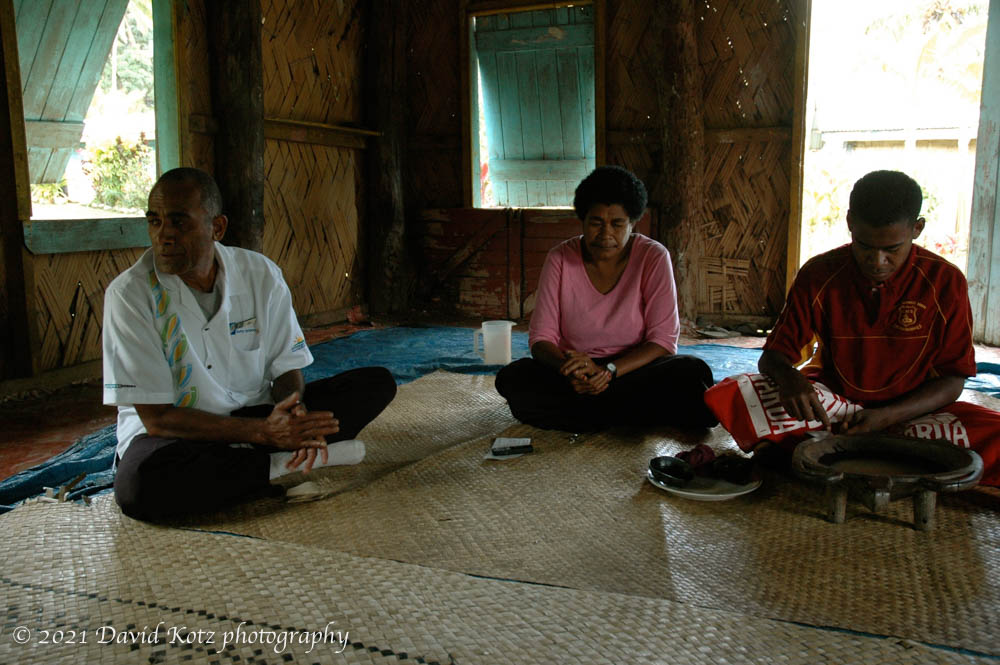
A small village in the highlands above Lautoka, a bit east of Nadi.
We spent Monday morning on a tour up into the hills above Nadi and Lautoka, to see a small village called Abaca. In Fijian, ‘b’ is pronounced ‘mb’, ‘d’ is pronounced ‘nd’, and ‘c’ is pronounced ‘th’. Thus we left Nandi to visit Ambatha. Read on!

Our home on ‘mainland’ Fiji.
For our first night in Fiji we stayed at Club Fiji, a small beachside resort near Nadi. A lovely place. We stayed in a bure with two rooms, right across the lawn from the beach and the sea. The beach here is on Nadi bay, which is very shallow at this point. At high tide, the bay was a pretty blue but at low tide, the beach was a vast area of tidepools and mudflats. Still, this makes for interesting exploring and a huge area for seeking shells. Read on!
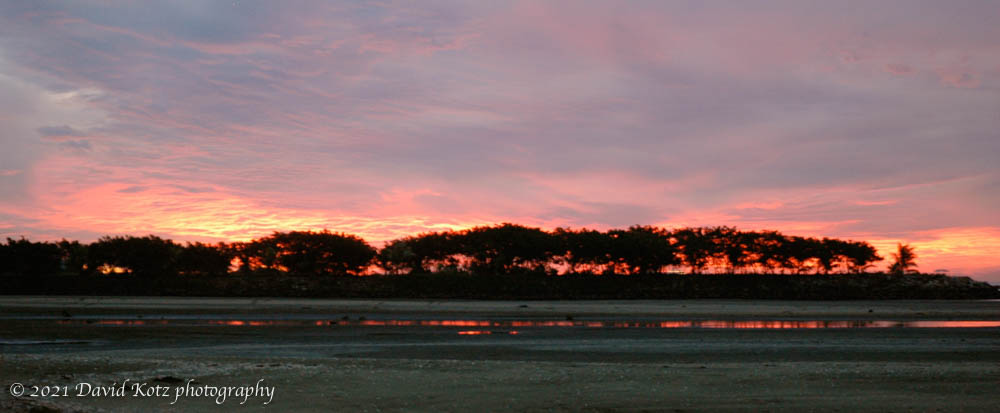
A family vacation that ends with a horrible accident.
This story was written by my father (Jack Kotz) shortly after the trip. The story of my broken neck occupies the last third of the story; you can read the 2009 blog entry describing my trip back to Fiji (twenty years to the day after my accident). See also the gallery of my photos.– dave
In the winter of 1988-1989 we decided to take a family trip in the summer of 1989. We wanted to celebrate the fact that Pete had graduated from college and Dave had completed his Ph.D. exams. We also realized that this may be the last chance for the whole family to travel somewhere together. After a great deal of thought and planning we decided to go to Fiji, a group of islands in the South Pacific, on the other side of the date line and north of New Zealand.
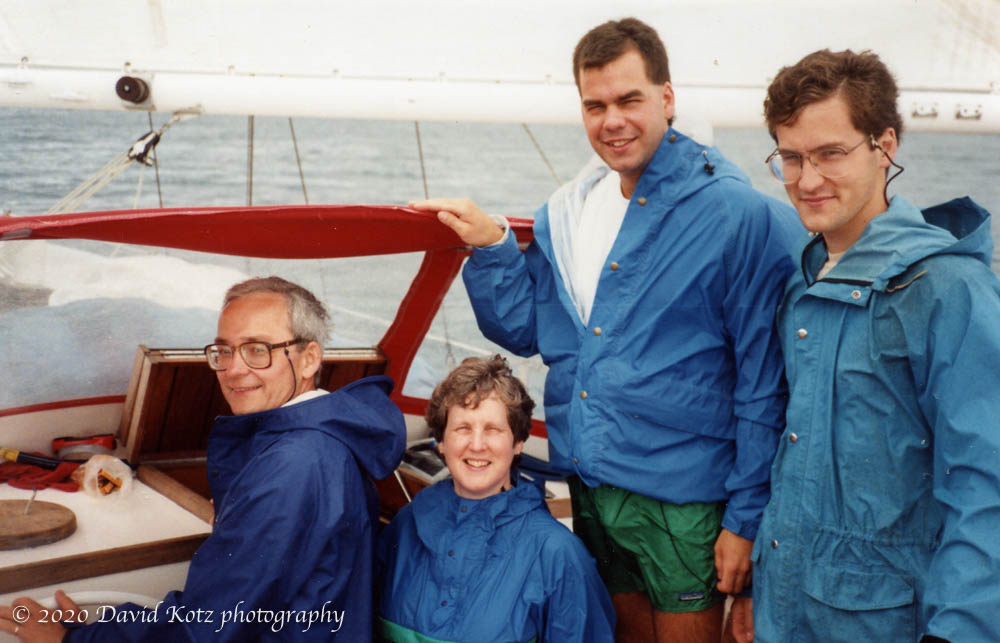
Dave was giving a paper at a computer science meeting in Los Angeles on June 7, so we flew there and met him for the flight to Fiji on Thursday, June 8. Our Qantas flight, about 13 hours in duration, was six hours late in leaving. Since we finally left about 4 AM on Friday, June 9, this meant that we flew almost all the way in day light. After about 8 hours we landed for refueling in Tahiti. It certainly is a beautiful place, with steep volcanic hills dropping into the ocean. Someday we’ll go back.
The flight from Tahiti to Fiji was about 4 1/2 hours, and we landed there at about 2 on Saturday afternoon, six hours late. Of course we had missed our connection to the island of Taveuni where we were to pick up our chartered sailboat on Sunday. But things in Fiji get done in their own time if you are patient. The little airline that was to fly us to Taveuni, Sunflower Airlines, rolled out a plane, found a pilot, and without telling us very much, put us on the plane.
After flying for well over 90 minutes, and seeing beautiful islands, coral reefs, and atolls, we started our descent into Taveuni, the so- called “Garden Island” of Fiji. As we lined up on a grass landing field, we looked out the window and saw, anchored in a beautiful bay, the lovely white yacht that we had chartered. What a sight!

After landing we walked over to the terminal – a small wooden building – where we were met by a fellow from the hotel where we to spend the night. He took us to the Maravu Plantation, a very nice small hotel near the airport. The rooms are small cottages in the Fijian style (called bure’s), and a beautiful beach was just a few feet away. The resort is owned by Ormond Eyre, a Fijian with European blood. He had been a Qantas steward for some years before returning to start his resort. His main interest is food, so we had marvelous gourmet meals in a beautiful open-air dining room every day during our stay. (Just outside the dining area were banana and papaya trees where they could get the fruit for meals and hibiscus and frangiapani flowers for the tables.)
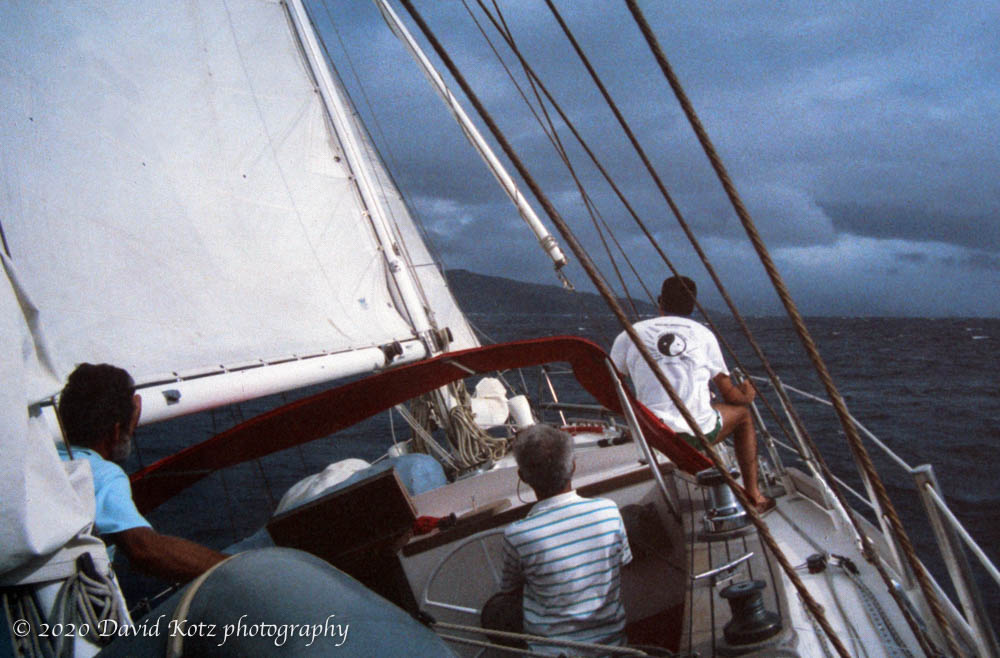
After a good dinner and a good sleep, we had a big breakfast and then were driven to meet the people who owned the boat we had chartered. They were Warwick and Dianne Bains; he is English and she is from New Zealand. He had had a great deal of experience sailing boats all over the world and had built the 54 foot, steel hulled ketch we were to sail. About noon we sailed out of the bay and into Somosomo Strait for the island of Kioa, about 10 miles way. We anchored off Kioa, did some snorkeling on a beautiful reef, and then had a marvelous dinner. (Dianne’s hobby is cooking, so we had some excellent meals.) On Monday, we sailed around Kioa in a good sea and then went ashore in the village. The people on Kioa are from the Ellice Islands, an island group north of Fiji. Apparently their islands had become overpopulated, so they bought Kioa from the government of Fiji and settled there. Not many white people come to this island, so there was a lot of interest in us, and all the women in the village turned out to sell us the handicrafts they had made. Warwick and Dianne knew many of the people in the village, so we met many of them and really had a good introduction to Fijian culture. A highlight was a visit to the school. The children were all coming back after their lunch in the uniforms. They gathered with their teacher on the beach near the school and all brushed their teeth. (Many Fijians have bad teeth because they chew sugar cane.)
After lunch we sailed on to the nearby island of Vanua Levu, the second largest of the Fiji group. We anchored in a sheltered bay surrounded by coconut palm plantations and then explored one of them. We also met one of the local fellows, who came on board with a load of fresh papayas, pineapples, limes, and lemons.

The next day, Tuesday, we sailed on around Vanua Levu to a small but very beautiful bay where we again went snorkeling and saw some magnificent coral. Later in the afternoon, we sailed into yet another nearby bay and then went ashore to visit the small village and see their new school. The children were again charming, and they came out to the boat very early the next morning to sell us shells. It was quite a sight to see the little children paddling out to us on a calm sea in their outrigger canoes.
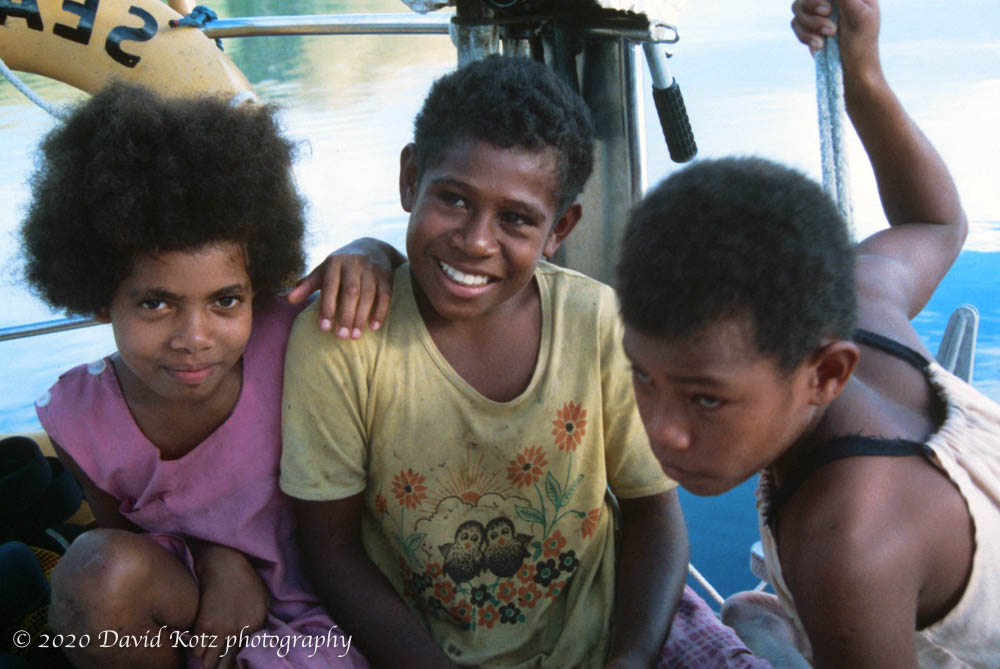
On Wednesday we met up with a diving boat from the best scuba diving resort in Fiji (called Dive Taveuni). Pete transferred to the boat for a day of diving in one of the best places in the islands. (He later said it was one of the most exciting experiences of his life.) The rest of us then sailed across the Somosomo Strait to Taveuni and then up the coast of the island to the east end where we met Pete at the end of the day and where we anchored for the night.
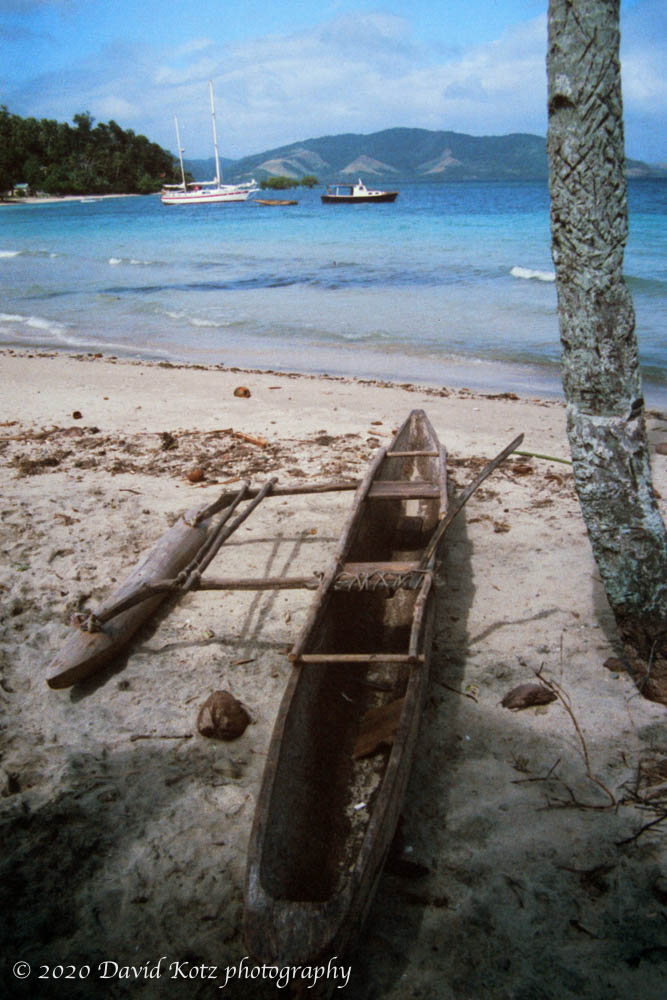
Thursday we sailed on to the island of Qamea and visited the very beautiful resort on that island. After anchoring in a sheltered bay we went to the resort for a Fijian meke, a way that the natives have of telling stories in song and dance. It was performed by local villagers as a way of raising money for their church, and it was very interesting and enjoyable. About 9 PM we started back to the boat, which was anchored about a mile away. Unfortunately, the heavens opened up and it poured! Needless to say we had a bit of trouble finding our way back through the reef to our boat.
Friday morning we visited a village on Qamea where Warwick and the village chief performed a traditional sevusevu, a ceremony where visitors present gifts to the chief in exchange for the privilege of visiting the village. (The gift is usually yaqona, the root of a plant from which they extract the traditional drink of Fiji. The root contains a chemical similar to pepper, and it has a numbing effect on the mouth.) The village was one of the most interesting we saw because the people lived in traditional houses made out of palm leaves and lived a life style close to the way they have lived for many years (except of course that they have given up cannibalism).
By later in the afternoon we had sailed over to Matagi Island, perhaps the most interesting anchorage we had seen. Matagi is a small island that was obviously a volcano. One side had broken away, so we could sail into the caldera. Warwick took us on a snorkeling trip to the reef just at the entrance to the bay that was the most spectacular we had seen. The water is so clear in Fiji that we could see the bottom at least 60 feet down. There were many types of corals in many different colors and fish of every size and color. And even some sharks cruising along the bottom. We finished a perfect afternoon by exploring some of the beaches in the bay and then had dinner by moonlight on a calm sea.
Saturday morning we decided to go ashore to see if we could find the most famous bird in Fiji, an orange dove with a green head! Apparently the best place to find it is on this island, and, sure enough, we found one at the top of a ridge overlooking our anchorage.
We sailed on late in the morning and anchored off Laucala (pronounced Lauthala). This island was bought some years ago by Malcolm Forbes for his private use. Although it is somewhat controversial, he moved the local village off the beach into new homes about 300 yards from the beach, and he provides for their medical care and education. The beach area is now used for a resort that is very small and very expensive. We met the resident manager, and he gave us a tour and even took us into Forbes’ home at the top of one of the highest hills on the island. (From the house and pool, you have almost a 360o view of the island, the beaches, and the Pacific. Beautiful!) Saturday evening we anchored once again off the island of Qamea and had dinner on a calm sea in the moonlight.
Sunday was our last day, so it was sad getting the boat ready to go home. However, we had a good sail across the strait from Qamea to Taveuni, and anchored in the bay by the Bain’s house on Taveuni about 11 AM. After saying goodbye to our hosts, we went back to Maravu Plantation Resort for the next several days.
On Monday the day dawned with a tropical rain — all wet but still nice and warm. Dave and I decided to take one of the tours offered to hotel guests: to a beach and waterfall on the other side of Taveuni. Off we went — with an couple from New Zealand — in a Taveuni taxi driven by someone we would come to know well: Suhk Lal. After about 10 miles we had to ford a river. Unfortunately, the river was higher than usual, so Suhk’s taxi stalled after getting to the other side. We had to dry out the distributor (using a cigarette lighter) and push the car to get going again. However, Suhk decided that it may not be safe to go on, as there were more rivers to ford. Therefore, we turned around, forded the river we had just been through, and went back to Maravu. There we decided to take a trip down the island’s other shore with our New Zealand friends, and Kate and Pete decided to go along.
The roads on Taveuni are just dirt tracks covered with coral, and, with the rain, they were even worse than usual. Unfortunately, after several miles Suhk’s taxi had a flat tire from the coral, so we had to change that. We finally made it to the end of the island and saw the beautiful black, volcanic rocks and beaches. We had lunch in the rain, and decided to head back. On the way back, the other taxi — carrying Dave, Pete, and a guide — broke down because the rocks in the road had torn out some wiring. But Suhk soon had it fixed, and we proceeded a bit further — but only after hunting for Suhk’s watch which he had lost while fixing the taxi. Soon we had yet another problem with a wheel on our taxi, which Suhk fixed in his inimitable way.
Along a particularly hilly, winding and muddy portion of the road we realized something was wrong again with Suhk’s taxi. The odor of hot brakes was coming from the right front wheel. Suddenly, the wheel fell off, and the taxi went out of control. It was fortunate we were going quite slowly, so Suhk guided the taxi as well as he could into the hill on the right side of the road. (If we had gone left, we would have gone over a bank that fell away into the ocean.) If it had not been so potentially catastrophic, the accident would have been quite comical. In another stroke of good luck, another taxi happened along just at that time, and took us back to Maravu.
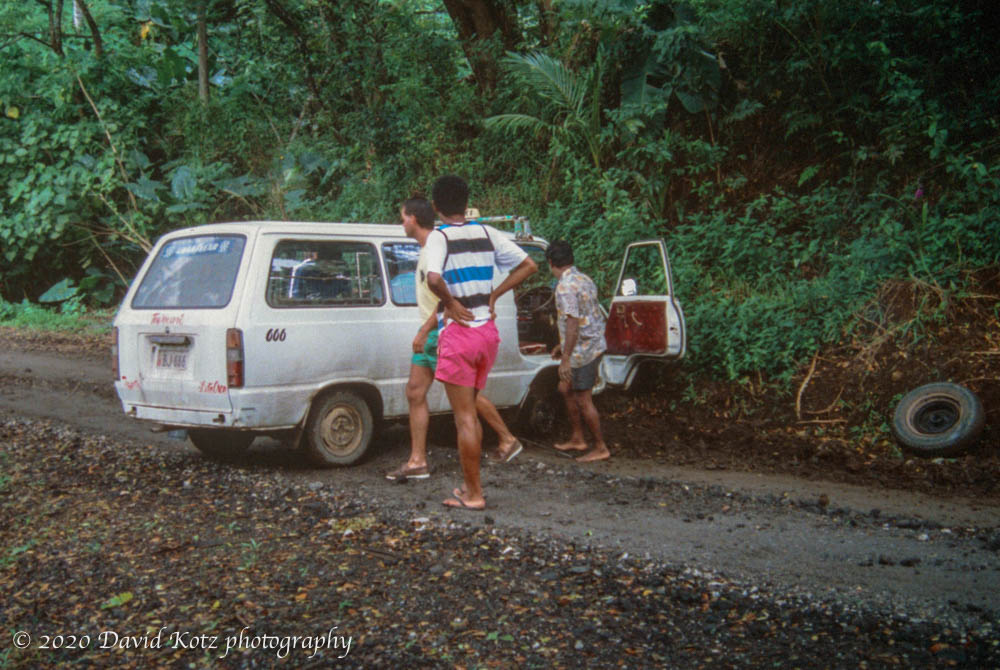
Tuesday was again raining, so Kate stayed in and read, while Dave, Pete, and I went off again with our New Zealand friends to a coffee plantation. The coffee on Maravu is especially good, and it was interesting to see how it is grown, picked, cleaned, and roasted.
Needless to say, the day we were to leave Taveuni dawned sunny and warm. We went to the little airstrip about 10 AM, and our plane arrived to take us back to Nadi on the main island of Viti Levu.
On landing at Nadi we picked up our rental car, and headed off along the south coast of Viti Levu for the town of Sigatoka. There we were to stay in a small resort called the Crow’s Nest. After Maravu it was a come-down, but it was nice enough and it was in a good location. Sigatoka is on the Coral Coast, about halfway between the airport at Nadi and the capital of Fiji, Suva. Sigatoka itself is an interesting market town, so we explored the souvenir shops there on Wednesday afternoon.
Thursday drove the 100 km or so to Suva, the most cosmopolitan city in Fiji. Even though it rained most of the day, we made the rounds of the souvenir shops and the Fiji Museum. The artifacts were very interesting, and detailed the history of cannibalism in the islands and the exploration of the islands by Europeans and Americans. In the evening we had dinner at the Great Wok of China. We thought the food at the Great Wok was some of the best Chinese food we have ever had. Fortunately we got there early and could get a table.
Friday, June 23 was to be our last full day in Fiji, so we decided to go to the beach. The guide book said that Natadola Beach on the island of Viti Levu was particularly beautiful, and, since I heard the road to it was terrible, we decided to take that little sugar cane train that starts at the Fijian Hotel and goes about 15 miles to the beach. I thought it was a bit pricey, but it was fun. The train derailed on the way out, but everyone got out and helped to get it back on, so we made it out there in time for a swim before lunch.
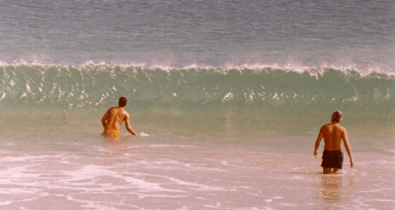
After our lunch I am afraid that tragedy struck us. Dave decided to go in again to go body surfing. (We had all been body surfing before lunch, and it was wonderful.) Unfortunately, Dave was caught in a wave and was slammed head first into the sand with the result that he broke his neck (although we did not know it at the time). He struggled out of the surf on his own and collapsed on the beach. Pete saw it happen and immediately went to help him. Fortunately, Pete knew that Dave had a serious head or neck injury, so, after talking with Dave, he made a cervical collar out of beach towels. Then, after a search, we found a large board from a old truck. At Pete’s direction, we lifted Dave onto the board, and then carefully put him on the train, still on the board. I held his head as firmly as possible on the hour- long ride back to the Fijian Hotel.
In spite of the fact that the train people had called ahead to the Fijian to have a doctor there when we arrived, there was none in sight nor none expected. At that point Katie used her travel agent credentials with the manager of the Fijian, and they finally located a doctor in the nearby town of Sigatoka. He came after about 45 minutes, looked at Dave, and said Dave probably just had a severe neck sprain and perhaps a concussion. However, he thought we probably should have him x-rayed in the nearest hospital with the appropriate equipment; this was in the city of Lautoka, about 100 kilometers away. The problem was to find an ambulance. This took another 30 minutes or so, and then it only took us to Sigatoka. After some more conversation — and time — they agreed to take him to Lautoka, so Pete went off to the hospital in the ambulance with Dave, and Katie and I went back to the Crow’s Nest, checked out, and moved all of our stuff to the Mocambo Hotel in Nadi, a city where the international airport is located and closer to Lautoka. We finally made it to the hospital about 9 at night or so, where Pete gave us the bad news. Dave did indeed have a severely broken neck.
By the time we saw Dave on Friday evening they had him in a very old fashioned cervical collar, but it didn’t fit. It turned out there are only 2 cervical collars in Fiji, and the other one — which we found the next day — fit better.
At this point we did not know what to do. The orthopedic man — Fiji has only one, and I’m afraid he is not very good — had left for the evening, and the only other doctor was in surgery. We waited for him until about midnight, and he told us that Dave would be all right, that we should not worry because he was neurologically OK, and that we should come back Saturday morning. We were scheduled to fly home on Saturday evening, so we were anxious to figure out what to do.
Saturday morning we called people at home, including our local orthopedic man, and then we began checking with Qantas on how to get Dave to LA. On arriving back at the Lautoka hospital the local orthopedic doctor was there; he’s Chinese and, unfortunately, his English is hard to understand. Both he and the surgeon had mentioned something about some American doctors that were around, but they were not clear about whether or when these doctors would be available. However, the Chinese orthopedic guy said again we could go ahead and take Dave home that night as originally scheduled. We just needed to ask Qantas how to do it.
About this point we didn’t know what to do. But also at that point one of the American doctors, Dave Frankl, walked in. He is a young fellow who is there with his wife, also a doctor, working at the Lautoka hospital for two years. With his arrival our luck began to turn around. He urged us to go slowly with everything, to stay in Fiji a few more days to make sure Dave was stable, and to have time to make proper arrangements since it was quite complex to do so. In the meantime he told us that there was a chance we could get the other American doctor, Taylor Smith, an orthopedic surgeon from San Francisco, to come over from the resort of Musket Cove on another island. (He was in Fiji for a month to vacation and teach at the Lautoka hospital.) Without really telling us, Dave Frankl realized the seriousness of the problem, called Taylor and had him fly over that afternoon. When Taylor came into the hospital and saw the x-ray I could tell we had a problem, but I knew that Taylor and Dave Frankl were going to help us get everything arranged properly.
Late on Saturday afternoon Taylor and the Chinese orthopedic doctor put Dave into a cast called a “Minerva jacket” that went from the top of his head down to his stomach. The idea was to stabilize his neck well enough that he could stand the trip home. Finally, we began to breath a bit more easily.

On Sunday we spent much of our day completing arrangements with Qantas for a stretcher to LA. This turned out to be extraordinarily complicated. However, the Qantas manager in Nadi (Joe Sang) was extremely helpful, and we shall always be grateful to him. We found that a stretcher in a plane requires them to set aside nine seats, and some airlines charge you for all of those seats. Qantas was very nice in only charging us for 3 seats, one of which we had already paid for as Dave’s seat. Also, all airlines require a doctor to travel with a stretcher patient, so we were faced with paying for a seat for one of the American doctors to go to LA and return. However, Taylor said that Dave was stable and that Pete was qualified to give the required medical care. It took some doing to get Qantas to accept that, but they eventually did, so everything was cleared to travel on Monday.
On Monday it took some doing to coordinate the ambulance for Dave to the airport, to pay the bill at the Lautoka hospital (the total came to $125 for three days in intensive care, at the tourist rate — natives pay far less), to check out of our hotel, return the rental car, and so on and on. We had another good piece of luck even then. Taylor Smith was going to stay in Fiji for another week, but his wife and daughter were flying home on the same flight as us. Therefore, Taylor rode to the airport in the ambulance with Dave and was there to help us settle him onto the plane.
When it came time to get Dave on the plane (a 747), we took him into the plane through one of the rear cargo doors using one of the hydraulic lifts that they use for food carts. It took quite a few people to maneuver Dave on a stretcher into the plane and then get him carefully onto the stretcher that was bolted to the floor of the plane. And poor Dave was hot, frightened, and sick to his stomach from the medicine we gave him to keep him calm. It was a real nightmare… and we single-handedly made a 747 full of people about 30 minutes late.
After we took off Dave finally drifted off to sleep from the medication we had given him and he slept all the way to LA. However, there was still a minor problem. Taylor Smith had specified that Dave needed a portable bed pan and urinal, items that are normally with the stretcher. However, someone in Nadi had pinched them, so we made do with an orange juice bottle until we could get them from the Qantas office in Tahiti. However, as we neared Tahiti the chief steward told us they didn’t have them in their offices but rather had had to beg or steal them from UTA.
One of the most difficult parts of making arrangements to fly a stretcher patient is to ensure there will be an ambulance at the other end. In fact, Qantas will not take a patient until you can guarantee an ambulance will be there to take the patient off their plane. At this point we had more luck.
When we called our orthopedic doctor at home on Saturday, he got in touch with a colleague, Bill Dillin, at Centinela Hospital in Los Angeles. (Centinela is one of the foremost orthopedic hospitals in the U.S. and Dillin is one of the best in that field.) Dillin then called Taylor Smith in Fiji, and quickly discovered that Taylor had been his professor in medical school. All three doctors recommended that we stop over at Centinela to have Dave checked to see if he was able to go on to New York. In fact, our local orthopedic doctor said that Centinela was the best possible place for Dave and that we should stay there in any event for his treatment.
Qantas was again very helpful on landing in LA. They had customs agents come on board to make that process as simple as possible, they helped us get Dave off the plane to an ambulance, and they helped Katie get Pete over to American Airlines so that he could go directly on to New York. So, by early afternoon on Monday, June 26 Dave was in a hospital in Los Angeles and two doctors were there to check him. After looking at the x-rays they told us it was just luck that Dave was not killed by the blow to his head and neck and that it was nothing short of a miracle that he was neurologically fine. They also said that he probably would have been crippled if Pete had not done the right things after the accident. (They said that Pete will probably never see an injury that bad in his career in sports medicine.)
On Monday we checked on ways to get Dave home, and that turned out to be almost insurmountable. Airlines in the U.S. do not want to take stretcher patients (the damned lawyers!), so we were told we would have to use an air ambulance. But the cost of that starts at $8000. Nonetheless, with the help of a service provided to holders of a Gold Card from Master Card, we made arrangements to fly Dave from LA to New York City on an overnight flight on Friday on Northwest and then to take him by ambulance from New York City to Oneonta. All at a cost of about $4000.
The original opinion of the doctors at Centinela was that Dave would need an operation on his neck and that he may have to be in traction for 12 weeks or more in a hospital. However, they did a CT scan on Tuesday morning and discovered less soft tissue damage than they had expected. This meant that he could go into a traction device called a “halo” and that he would only probably need only about 2 weeks of hospital care after his operation. With this opinion, and observation that Centinela was really a first-rate place to take care of him, the three of us made the decision to stay there.
Therefore, they placed him in a “halo” on Wednesday. This device consists of a hard plastic vest that the patient wears. The vest supports U-shaped stainless steel bars that rise along the head. The bars are bolted to a ring or “halo” that goes around the patient’s head, about 1 inch away from the head. The ring is fastened to the head with titanium bolts. The bolts go through the ring, through the skin, and into the skull. Dave will have to be in this thing about 3-4 months. It is cumbersome and uncomfortable, but at least he can walk around in it.
After Dave had been stabilized in his halo, Dr. Dillin operated on his neck on Friday, June 30. They wired the broken vertebra together with the ones above and below. Then, using bone from his hip, they grafted bone onto his spinal column to keep the three vertebrae together permanently. The operation was very successful, and by the following Tuesday Dave was up and walking and really beginning to feel better. For the first time in about 10 days we could begin to believe that our son was going to come out of this a whole person.
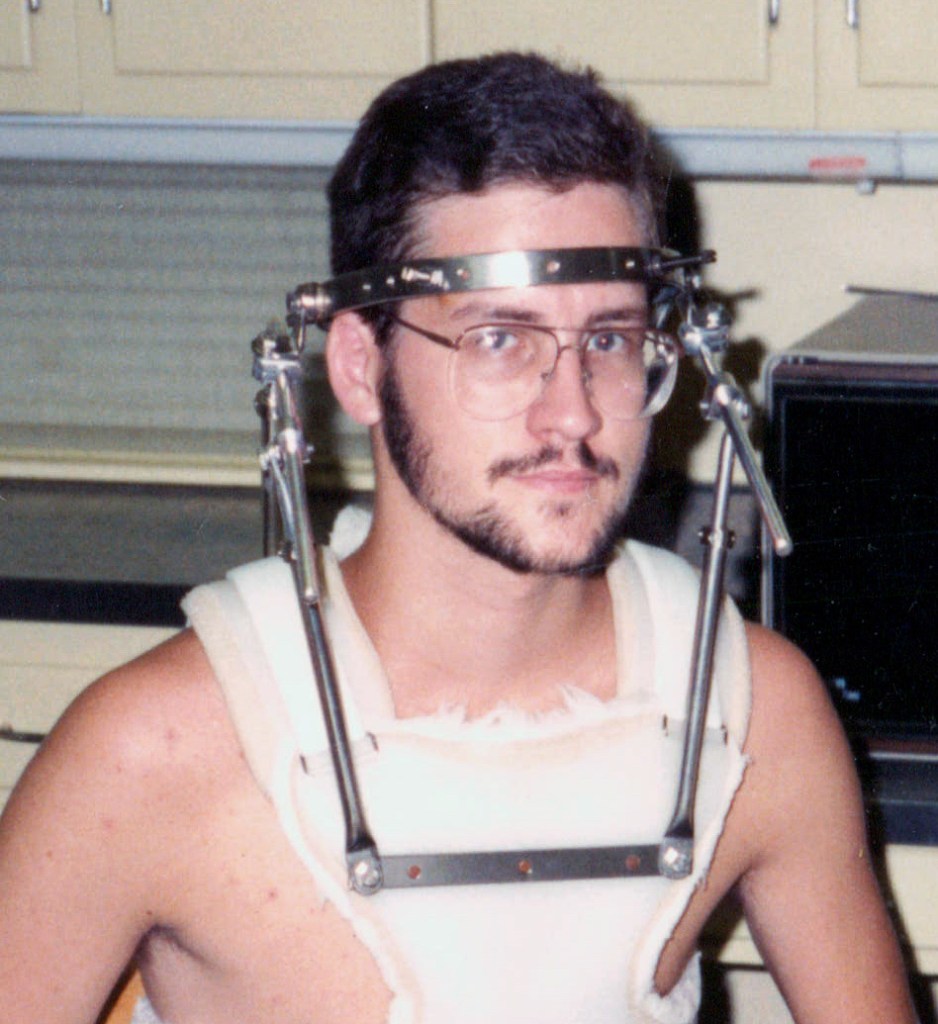
Our decision to stay in the hospital in LA was a good one. The hospital sees a number of spinal injury patients, so the nurses and technicians know how to take care of such people. In addition, it was a very nice place, and Dave had a large, comfortable room. And finally, the people there were warm, friendly, and very helpful.
Although this has been a difficult time for us, many good things have come out of it. First, the people in Fiji were wonderful to us. The hospital does not have much, but they gave us the best care possible within the limitations of their facilities and equipment. The staff at the Hotel Mocambo were marvelous (the manager and one of the people at the desk even went to the hospital to visit Dave and they were helpful in making calls for us and in other ways). The people at Qantas went out of their way to be helpful, and we owe them our gratitude for smoothing over many problems. And Taylor Smith was marvelous. He went well beyond his duty, and he and his wife were a considerable comfort to us. In spite of the accident, we left Fiji feeling deeply grateful for the friendship of her people.
We went to Fiji to have family time together and for some adventure. We certainly found both. We did not come back refreshed, but rather with a renewed sense of our family. It was worth the journey.
[editor’s note: I returned to Fiji in June 2009, twenty years later; read blog entry about that visit]
This post was transferred from MobileMe to WordPress in 2020, with an effort to retain the content as close to the original as possible; I recognize that some comments may now seem dated or some links may now be broken.